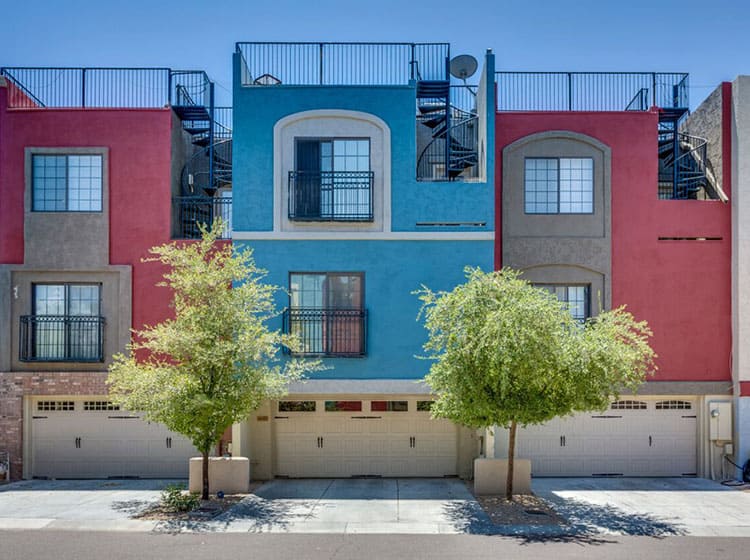Before Embarking On Your Paint Task, It Is Important To Comprehend The Primary Differences In Between Exterior And Interior Paint. This Understanding Can Significantly Impact The Success Of Your Work
Before Embarking On Your Paint Task, It Is Important To Comprehend The Primary Differences In Between Exterior And Interior Paint. This Understanding Can Significantly Impact The Success Of Your Work
Blog Article
Post Produced By-Fisker Schmitt
When you're selecting between exterior and interior paint, it's necessary to understand their basic differences that influence both performance and visual appeals. Interior paints are crafted for lower VOC degrees and smoother finishes, making them ideal for indoor spaces, while outside paints are created to withstand harsh weather conditions and UV direct exposure. Each type serves a distinct function, yet recognizing when to make use of one over the various other can significantly affect your job's outcome. So, what elements should you take into consideration when making your choice?
Structure and Solution
When picking in between exterior and interior paint, understanding their composition and formula is crucial. Interior paints commonly include a reduced quantity of volatile organic compounds (VOCs), making them more secure for indoor air high quality. You'll see they usually have a smoother finish, which improves their capacity to stand up to spots and enables simpler cleaning. They're created to withstand the roughness of indoor atmospheres, consisting of differing moisture levels and temperature changes.
On the other hand, exterior paints are developed to sustain harsher conditions. They normally have higher degrees of pigments and additives to stand up to fading from UV rays, in addition to to prevent mold and mold development. Their composition includes much more binders and resins, which give better bond to surface areas revealed to the aspects. This makes certain the paint can hold up against rainfall, snow, and fluctuating temperatures without peeling off or splitting.
Performance and Toughness
Assessing performance and sturdiness is important when choosing between interior and exterior paint. Inside paint is created for surface areas that experience less wear and tear. It normally resists fading and scuffing, making it excellent for living rooms and bedrooms. Nonetheless, it might not stand up well in high-moisture locations like kitchens and bathrooms without correct formula.
On the other hand, exterior paint encounters harsher problems. It's crafted to withstand UV rays, rain, and temperature level fluctuations. This type of paint commonly includes additives that protect against mold and mildew development, making certain durability in various climates. When you utilize outside paint, you can anticipate it to last numerous years much longer than indoor paint, provided it's used properly.
Another essential distinction depends on the surface options. Interior paints typically have a selection of surfaces for aesthetic appeal, while outside paints focus on durability over sheen. If you're seeking something that can manage the aspects, outside paint is your best choice.
In contrast, if you're focused on indoor aesthetic appeals with less worry for extreme conditions, indoor paint may be appropriate. Inevitably, your choice needs to line up with the certain needs of the atmosphere.
Aesthetic Considerations
A fresh coat of paint can transform an area, however aesthetic considerations play a crucial function in your option between exterior and interior options. When you're picking paint, think about the mood you intend to develop. Interior paint enables you to discover a broader range of colors and surfaces, enabling you to share your individual design and enhance your home's ambiance. Whether you choose soft pastels or vibrant shades, the appropriate indoor paint can make your rooms feel comfy, lively, or serene.
On the other hand, outside paint needs to line up with your home's design and the surrounding setting. helpful site , you're not just making a style declaration; you're likewise thinking about aesthetic charm. Selecting colors that balance with your area can improve your home's worth and visual appeal. Keep in https://interior-house-painters-n55554.boyblogguide.com/30656443/discover-essential-techniques-for-picking-drywall-specialists-but-make-certain-to-consider-this-crucial-element-that-might-influence-the-success-of-your-project that exterior paint is additionally subject to fading and weather adjustments, so selecting a classic shade can conserve you from frequent repainting.
Inevitably, take into consideration how each option fits your vision. By aligning your paint choice with your desired aesthetic, you can develop spaces that reflect your personality while preserving functionality.
Conclusion
When it involves picking paint, recognizing the key differences between interior and exterior options is necessary. Interior paints concentrate on aesthetics and reduced VOCs, making them excellent for enhancing your interior areas. In contrast, exterior paints are created for resilience and weather condition resistance, protecting your home from the components. By considering your certain needs and the atmosphere, you can confidently select the ideal paint to achieve the look and durability you want for your area.
